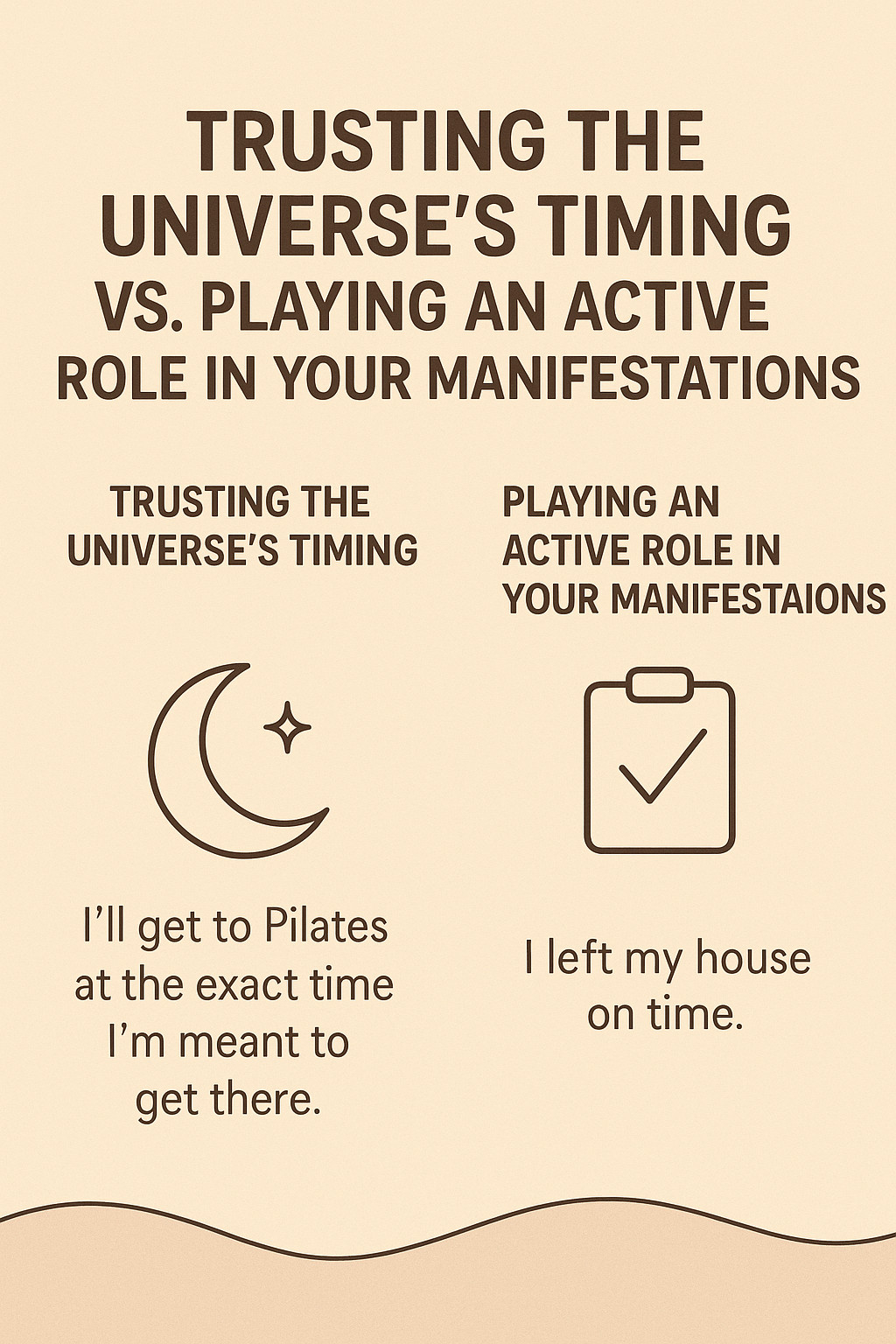
We’ve all met two people who have gone through similar challenges but ended up on completely different paths. Maybe it’s two coworkers who both lost their jobs, two friends who both faced heartbreak, or two neighbors who both battled health setbacks. On the surface, their circumstances look nearly identical. But their outcomes? Night and day.
I was recently reflecting on how much our mindset shapes our experience of healing and growth. Take something like a physical injury. Two people could suffer the same issue — even at the same time. One might approach it with determination, focusing on health, fitness, and building resilience. The other might lean on quick fixes, give up activities that once brought them joy, or turn to substances just to get through the day.
Neither approach makes someone “good” or “bad” — it simply highlights how powerfully our beliefs and choices shape our journey. When we decide to double down on supporting our bodies and minds, even when it’s hard, we open ourselves to healing, possibility, and joy. But when we let pain dictate our choices, we risk shrinking our world until the things that once made us feel alive start to disappear.
Why Mindset Is a Healing Tool
- Belief creates momentum. When we believe healing is possible, we’re more likely to take steps that support recovery.
- Small choices add up. Choosing movement, proper nutrition, and self-care daily builds strength over time.
- Joy is medicine. Holding on to activities that light us up can be just as important for healing as the exercises we do.
- Quick fixes have trade-offs. While substances or distractions can ease the moment, they don’t address the root cause — and sometimes keep us stuck.
Questions to Ask Yourself
- Am I choosing habits that move me closer to healing, or ones that keep me comfortable but stagnant?
- What activities bring me joy that I refuse to give up, even if I need to modify how I do them?
- How can I support my body and my mind through this challenge?
At the end of the day, our bodies are resilient — but our minds often set the pace for our healing. The story we tell ourselves matters. If we choose to believe in our own strength, we can often find ways to keep joy and movement alive, even in the middle of challenges.

Have you ever had one of those days—maybe weeks—where your mind feels fuzzy, your thoughts are scattered, and you're just… not all there? You might chalk it up to lack of sleep, hormones, or too much screen time. And while those are valid contributors, there’s another deeper, often overlooked reason for brain fog: spiritual growth.
In this blog post, we'll explore what brain fog really is, why it may arise during periods of spiritual transformation, and what to do when the fog rolls in.
What Is Brain Fog?
Brain fog isn't a medical diagnosis, but it’s a very real experience. It's characterized by:
- Mental fatigue
- Difficulty concentrating
- Forgetfulness
- Confusion or disorientation
- A general feeling of being “off”
It’s as though your brain is trying to boot up, but someone spilled molasses on the hard drive. You’re trying to access clarity, creativity, and drive—but everything feels distant, like it's behind a thick veil.
The Spiritual Connection: Why Fog Often Follows Growth
Brain fog is often a symptom of energetic integration. When you're moving through a spiritual awakening, expanding your consciousness, or letting go of old identities and limiting beliefs, your energetic system goes through a sort of “upgrade.” And just like any software update, your system might slow down while it's installing.
Here’s how brain fog ties into spiritual growth:
1. Energetic Detox
Letting go of outdated beliefs and emotional patterns releases stagnant energy. But just like a physical detox, this can cause temporary discomfort, confusion, or fogginess as your system recalibrates.
2. Third Eye Recalibration
The third eye chakra governs intuition and mental clarity. As this center awakens, your usual ways of thinking may shut down to make room for new intuitive pathways. What feels like mental fog may actually be your brain stepping aside to let your intuition lead.
3. Liminal Space = Confusion
Growth doesn’t happen in neat, clean steps. There's a middle zone between who you were and who you are becoming. Brain fog often shows up in this in-between space—where you’ve outgrown the old but haven’t yet anchored into the new.
What to Do When the Fog Rolls In
Instead of resisting brain fog, treat it as sacred pause. Here are some ways to work with it:
✦ 1. Slow Down and Listen
Brain fog can be your soul’s way of saying “rest.” Stop pushing. Get quiet. Journal. Nap. Stretch. Let your body and energy system catch up.
✨ Journal Prompt:
“What am I letting go of right now, and what might be coming into my life in its place?”
“What am I letting go of right now, and what might be coming into my life in its place?”
✦ 2. Ground Your Energy
Spiritual growth often lifts us into high-frequency states, which can make us feel ungrounded. Counter this by:
- Walking barefoot in grass
- Eating warm, earthy foods
- Practicing gentle yoga or breathwork
- Using grounding crystals like hematite or black tourmaline
✦ 3. Hydrate and Nourish Your Brain
Brain fog isn’t just spiritual—it’s also physical. Support your body with hydration, Omega-3s, leafy greens, and B-vitamins. Your soul's evolution still needs a well-fed brain to function.
✦ 4. Set Spiritual Boundaries
Sometimes brain fog is the result of energetic overload. If you’re empathic or sensitive, check in: Are you carrying someone else’s energy? Cleanse your field with sage, sound bowls, or an energetic cord-cutting ritual.
✦ 5. Trust the Reboot
Fog is often followed by deep clarity. Your higher self knows what it’s doing. Let the mind rest while the spirit upgrades.
A Final Word: Brain Fog Is Not a Failure
It’s easy to feel frustrated, especially if you're used to being productive and clear. But what if this fog isn't a failure—what if it’s a feminine invitation to stop doing and start being? To receive? To allow?
Spiritual growth isn’t linear, and your body-mind-spirit system is incredibly wise. Trust that what looks like confusion is part of your transformation.
Ready to Clear the Fog?
✨ If you're in a foggy spiritual growth phase and want support, book a session with me or check out my CBAR Manifestation Workbook designed specifically for people with aphantasia and unique processing styles. You don’t have to navigate this journey alone.
🌀 And if this blog resonated, share it with a soul sister (or brother) who might need to hear that their fog is sacred too.
With love and clarity (even in the fog),
Colleen

I recently saw a video from a well-known “manifestation specialist” suggesting a hack to stay in alignment throughout the day: set numerous alarms on your phone as reminders to check your vibration and make sure it matches what you’re trying to manifest.
So, I tried it.
I really did.
I really did.
But I didn’t even make it two weeks.
As it turns out, being jolted out of flow every 90 minutes by a robotic alarm didn’t raise my vibe — it tanked it. And it didn’t just stress me out… it rattled everyone around me too. The constant buzzing started to feel less like alignment and more like anxiety.
While I can absolutely see how this technique might be powerful for someone else — especially if they thrive on structure or reminders — it just wasn’t for me. It felt more like spiritual micromanaging than spiritual embodiment.
So I gave it some thought. I sat with the intention behind the idea — the desire to stay present and in sync with my energy — and asked myself:
“How can I check in with myself throughout the day… in a way that feels natural, peaceful, and supportive?”
And a few gentle ideas came forward.
Here Are My Favorite Vibe Check-In Practices (No Alarms Required):
🌿 1. Anchor Your Check-In to Daily Rituals
Instead of setting a timer, attach your check-ins to something you already do:
- When you make your tea or coffee
- When you wash your hands
- When you get into your car or open your computer
Each time, ask yourself:
“How do I feel right now? Am I in alignment with how I want to feel?”
This creates rhythm, not disruption.
✨ 2. Use Physical Anchors
Carry a small object — like a crystal, a ring, or even a coin — and let it become your “vibe touchstone.” Every time you notice or touch it, pause and take a deep breath.
Let that breath be your reminder:
“Realignment is always one breath away.”
🌕 3. Use the Moon Phases as Bigger Check-In Points
Instead of trying to force micro-alignments all day, zoom out and work with natural rhythms.
In my 28-day manifestation journey, we follow the CBAR cycle — Conceive, Believe, Achieve, Receive — aligned with the moon’s phases. Each phase invites a deeper self-check-in, naturally.
In my 28-day manifestation journey, we follow the CBAR cycle — Conceive, Believe, Achieve, Receive — aligned with the moon’s phases. Each phase invites a deeper self-check-in, naturally.
Want to try it?
👉 Learn more about the CBAR Manifestation Cycle here
👉 Learn more about the CBAR Manifestation Cycle here
🌀 4. Ask One Grounding Question Each Day
Instead of checking your vibe constantly, anchor into one question in the morning and revisit it at night. Here are a few to try:
- “What energy do I want to bring into today?”
- “What would being in alignment feel like today?”
- “What would it look like to let today be enough?”
You can keep a small Vibration Journal (even just a few lines a day!) to track what comes up. I include this practice in my 1:1 coaching sessions — especially for folks who prefer a less visual approach to manifestation.
👉 Work with me 1:1
👉 Work with me 1:1
💜 5. Let Your Body Be Your Feedback System
Your nervous system is wiser than your phone.
Tight jaw? Racing heart? Brain fog? Your body is already signaling that something’s out of sync.
Joyful sigh? Soft shoulders? Clear mind? That’s alignment, baby.
Tight jaw? Racing heart? Brain fog? Your body is already signaling that something’s out of sync.
Joyful sigh? Soft shoulders? Clear mind? That’s alignment, baby.
The more you practice tuning in to how you feel — not just what you're thinking — the more natural these check-ins become.
Alignment Doesn’t Have to Be Loud
What I’ve learned is that staying in alignment doesn’t require constant effort, or external alerts, or spiritual over-engineering.
It requires presence.
Curiosity.
Self-trust.
Curiosity.
Self-trust.
And sometimes, it means ditching someone else’s hack and crafting your own sacred rhythm instead.
So if alarms aren’t your thing, know this: You’re not doing it wrong.
There are softer ways. Wiser ways. Ways that meet you exactly where you are.
There are softer ways. Wiser ways. Ways that meet you exactly where you are.
Ready to explore a more intuitive approach to manifestation — especially if your mind works a little differently?
My programs are designed with spaciousness, play, and deep inner knowing in mind. Whether you’re starting your journey or refining your practice, I’ve got support to meet you there.
My programs are designed with spaciousness, play, and deep inner knowing in mind. Whether you’re starting your journey or refining your practice, I’ve got support to meet you there.

There’s a moment on the spiritual path that no one really warns you about. It comes after the breakthroughs.
After the ahas. After the downloads, awakenings, and bursts of creative fire.
It’s quiet here. Still.
Almost... too still.
For me, it came like this: I’d been on a whirlwind of spiritual growth for months — learning, unlearning, expanding, purging, creating, questioning, trusting. It was exhilarating. Dizzying. Purposeful.
And then, it stopped. No drama. No crash. Just… the absence of the urge to keep digging.
I felt so different, yet somehow still the same. I didn't want to study anything.
I didn’t feel called to create anything. I wasn’t seeking more. I didn’t need to.
I felt so different, yet somehow still the same. I didn't want to study anything.
I didn’t feel called to create anything. I wasn’t seeking more. I didn’t need to.
And for a moment, I wondered: Is something wrong with me? Am I stuck? Am I disconnected?
But here's what I’ve come to understand: this phase is sacred.
The Integration Phase: Where Spirit Settles into Self
The integration phase is the time after an energetic or emotional expansion where your mind, body, and soul begin to synthesize what you’ve just experienced. You’re not in motion anymore, but you're still transforming — just beneath the surface.
You can think of it like this:
- After a big meal, you need time to digest.
- After an intense yoga practice, you lie in savasana.
- After planting seeds, the soil looks still — but magic is happening underground.
Spiritual integration is that kind of stillness.
You’re metabolizing lessons. You’re recalibrating.
Old patterns are quietly unraveling.
New frequencies are settling into your system.
Old patterns are quietly unraveling.
New frequencies are settling into your system.
And because we live in a world that equates stillness with stagnation, it can feel unnerving. Like you’ve lost momentum. But in truth, you’re entering a more embodied state — where wisdom isn't just understood intellectually, but lived quietly and naturally.
This is where your soul stops shouting and begins to whisper.
Where the chase ends, and you begin to trust the becoming.
Where the chase ends, and you begin to trust the becoming.
How to Find Peace Inside the Integration Phase
There’s no rush here. No "next step" to push toward.
But if you’re craving some gentle support inside this stillness, here are a few soul-honoring ways to soften into it:
But if you’re craving some gentle support inside this stillness, here are a few soul-honoring ways to soften into it:
1. Let stillness be the practice.
You don’t need to force peace — just make space for it.
Five quiet minutes with your eyes closed. A slow walk without your phone. A full body sigh.
Stillness is not empty. It’s full of presence.
Five quiet minutes with your eyes closed. A slow walk without your phone. A full body sigh.
Stillness is not empty. It’s full of presence.
2. Anchor your days with tiny rituals.
A candle in the morning. A single oracle card. A warm cup of tea in the same mug every day.
Ritual helps you feel held — without requiring anything from you.
Ritual helps you feel held — without requiring anything from you.
3. Give yourself permission to be unproductive.
This is integration’s greatest challenge. Your worth is not in your doing. Let yourself rest without guilt. You are still growing, even in the pause.
4. Journal what feels complete.
Instead of asking what's next, try asking:
“What is done?”
“What no longer needs my energy?”
Sometimes clarity arrives when we stop trying to make something happen.
5. Trust your rhythm.
The urge to create or seek will return, naturally. Don’t worry about missing it — you’ll know. For now, let this be enough.
A Gentle Ritual for the Spiritual Pause
If you’re in this space right now — not hungry for more, but not lost either — consider honoring this phase with a simple ritual:
The Candle & Cup Ritual
🕯️ Light a small candle.
🥣 Pour yourself a cup of tea or water.
🌬️ Sit in stillness for three breaths.
📖 Then say aloud or in your heart:
🥣 Pour yourself a cup of tea or water.
🌬️ Sit in stillness for three breaths.
📖 Then say aloud or in your heart:
“I welcome this stillness.
I trust the pause.
I honor all that has shifted within me.
I allow this integration to unfold in perfect time.
I am enough, even in the quiet.”
Drink slowly. Breathe deeply. No need to feel anything special. Just be there.
A Journaling Prompt for This Space
When you're ready to reflect, try this:
“What feels complete in me right now?”Followed by:“What do I no longer need to chase?”
Let the answers rise without force. Sometimes the deepest wisdom emerges not from asking, but from allowing the space to receive.
If you’re here — in the in-between, the neutral zone, the eye of your own inner storm — take heart. You are not broken. You are not lazy. You are not behind.
You are becoming.
In stillness.
In softness.
In surrender.
In stillness.
In softness.
In surrender.
And that is sacred work, too.

In a world filled with distraction, uncertainty, and constant noise, it’s easy to feel disconnected — from ourselves, from our purpose, and from something greater.
But what if the connection was never truly broken?
What if it’s always there — just waiting for you to remember?
What if it’s always there — just waiting for you to remember?
This is the power of a spiritual mindset.
It’s not just a way of thinking. It’s a way of being — one that opens the door to Source, to your angels, and to your guides.
It’s not just a way of thinking. It’s a way of being — one that opens the door to Source, to your angels, and to your guides.
🧘♀️ What Is a Spiritual Mindset?
To me, a spiritual mindset is a conscious choice to view life through the lens of connection, intuition, and trust. It’s the decision to believe that:
- Everything is Source — people, plants, animals, stars, and even challenges.
- Time is not linear — you are more than just this moment in this body.
- You are supported — always — by seen and unseen forces that love you.
A spiritual mindset says:
"I am not alone. I am connected. I am guided."
"I am not alone. I am connected. I am guided."
And from that place, life begins to shift.
🌌 Connecting with Source
When we talk about “connecting with Source,” we’re not reaching out to something far away.
We’re tuning in to what’s already within us.
You are Source, expressing itself as you — curious, growing, and exploring this human experience.
We’re tuning in to what’s already within us.
You are Source, expressing itself as you — curious, growing, and exploring this human experience.
The more you nurture a spiritual mindset, the more you naturally remember that truth.
The more you feel held, even in chaos.
The more you hear the whisper:
You’re right where you need to be.
The more you feel held, even in chaos.
The more you hear the whisper:
You’re right where you need to be.
👼 Connecting with Angels and Guides
So where do angels and guides fit in?
They are expressions of Source — just like you.
Some may be aspects of your own higher self. Others may be loved ones who have crossed over. Some may be nonphysical beings whose soul mission is to support yours.
Some may be aspects of your own higher self. Others may be loved ones who have crossed over. Some may be nonphysical beings whose soul mission is to support yours.
But here’s the beautiful part:
You don’t need to see them to know they’re with you.
You don’t need to see them to know they’re with you.
Especially if you have aphantasia — or find it hard to visualize — your connection might come through:
- A feeling of peace out of nowhere
- A repeating number, song, or phrase
- A quiet knowing
- A sudden idea that just “lands” in your mind
This is guidance. This is connection. This is real.
And the more you hold a spiritual mindset, the more these signs become clear.
🧘♂️ How to Cultivate a Spiritual Mindset
You don’t need hours of silence or perfect rituals.
You need presence. And a willingness to believe that something greater is always with you.
You need presence. And a willingness to believe that something greater is always with you.
Try this:
- Start your day with a grounding intention. Something like: “I choose to walk with Source today.”
- Journal what you’re grateful for. Gratitude aligns your energy with love.
- Talk to your guides out loud. Yes, out loud! Speak to them as if they’re real — because they are.
- Trust what comes. The first thought, the gut feeling, the idea that won’t leave — that’s often the message.
And when your mindset slips (because life happens), don’t judge.
Just breathe. Re-center. Begin again.
Just breathe. Re-center. Begin again.
✨ You Are Never Alone
No matter what your mind tells you.
No matter how disconnected you feel.
No matter how “imperfect” your spiritual practice may be…
No matter how disconnected you feel.
No matter how “imperfect” your spiritual practice may be…
You are always connected to Source.
You are always guided.
And you are always enough.
You are always guided.
And you are always enough.
All it takes is a shift — a return to a spiritual mindset — to feel the presence that’s been with you all along.
💌 Want Support Cultivating Your Spiritual Mindset?
Join me at my next Manifestation Circle or book a session to receive personalized tools for connection — even if you can't visualize.
Together, we’ll create a spiritual practice that works for you.
Together, we’ll create a spiritual practice that works for you.





